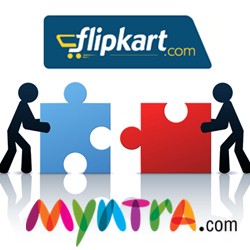Trouble-free Brand Integration Is a Must in M&A
Mergers and acquisitions is common practice in the business world. It allows corporate ambitions to soar. M & A makes its effects in the areas of corporate finances, management and strategy dealing, human resources, marketing, sales, R&D and infrastructure of the firm. In short everything changes in the corporate entity when it gets purchased by another corporate or it joins with another corporate.
Though the two are often mentioned together, a merger is very different from an acquisition. A merger involves two corporate entities joining forces and becoming a new business entity, with a new name. It usually involves two companies of same size and stature joining hands. An acquisition, on the other hand, involves one bigger business taking over a smaller company which may be absorbed into the parent company or run as a subsidiary. The company being taken over is referred to as the ‘target company’ in the corporate world.
In India the huge and most talked about takeover or acquisition last year was seen of the seven year old Bangalore based domestic e-retailer Flipkart acquiring the online portal Myntra for an undisclosed amount which industry analysts and insiders believe it was a $300 million or Rs 2,000 crore deal.
Another one was Sun Pharmaceutical Industries Limited, a multinational pharmaceutical company bought the Ranbaxy Laboratories. Ranbaxy shareholders will get 4 shares of Sun Pharma for every 5 Ranbaxy shares held by them. The deal is worth $4 billion.
Globally, the pharmaceutical industry saw a flurry of mergers and acquisitions this year, but the biggest one was of Novartis AG (NVS) and GlaxoSmithKline (GSK) which agreed to swap $20 billion in assets in what amounted to major restructurings for both firms. Novartis bought GlaxoSmithKline’s cancer drug business, GSK took Novartis’s vaccine business, and the companies agreed to combine their respective over-the-counter and consumer drug businesses.
Facebook Inc purchased WhatsApp which saw the largest-ever purchase of a venture FB purchased whatsApp for $22 billion; $16 billion-price given at the announcement of the deal. So why did FB take this expensive plunge? As it touted at the time, WhatsApp — a free text message service — is about twice as large by user base as Twitter Inc. The M&As can happen for various reasons. Goldman Sachs was the top M&A adviser worldwide, with $623 billion worth of deals last year.
What’s considered most important in M&A is the post-M&A result which can be very exhaustive than imagination. Organisations must control effective and efficient management of merging corporate brands and their respective portfolios. Particularly for those that have an international standing. The management and building of each brand in the combined portfolio needs to be consistent around the world and needs to match its acknowledged role, the consistency needs to be maintained in every market. Still, since consumer behaviour may vary from market to market, the strategic position established for each brand in the mixed portfolio can only offer some general guidelines as no sure short solutions are available or can be offered for a successful venture raised out of the M&A.
Brand integration is priority after an M&A
The global positioning of a merged brand is quite complicated and exhaustive. Each market requires unique strategies. For sensible brand integration organizing human resources is very important. The efficacy of the merging brands and its success depends on how in fact the human resources are organised. Ford established a “Premier Automotive Group” (PAG) to be in charge of its premium brands right after the acquisition of Jaguar. Furthermore, when the company acquired Land Rover and Volvo (also premium brands), the PAG took the responsibility of brand integration.
Being equally fair to people is most important
Treating the employees with respect and fair financial benefits serves half of the problem. Given the fact that M&As often take place at corporate level, the issues regarding human resource including the necessary laying offs should be addressed first right after the announcement of the deal. These issues should be tackled rightly by taking assistance of the mature consultants or firms. The incorporation of human resources becomes an essential issue, one common response from the managers in the case studies being that groups of people embedded within particular cultures are difficult to integrate. In relation to brand integration, three important rules could be outlined from many case studies: the best people must be selected equally from both sides; people must be integrated rapidly and with sensitively; and in that order, respect and fair financial benefits must be ensured to all.
Training is crucial at this juncture
A brand acquisition comes along with its brand people, its marketing, its brand building methods, its brand ‘languages’ or terminologies and others. An essential part of brand integration consists in homogenizing all of the above – making people do brand building in a common way and speak a similar marketing or brand ‘language.’ This is a process which training can be an extremely useful tool. It’s easy for people in an organization to get caught up in the glamour of integrating two organizations. For the moment, that’s where the action is. The future shape of the company, including jobs and careers, appears to be in the hands of the integration taskforces. But if management allows itself and the organization to get distracted, the base business of both companies will suffer. If everybody’s trying to manage both the ongoing business and the integration, nobody will do either job well. This is where assigning responsibilities come in picture.
Marketing Management
Putting the customer at the centre of planning and analysis is most crucial. This begins by understanding customer profitability by segment and targeting identified markets. It requires a comprehensive evaluation of how well each brand in the portfolio compares to its key competitors in meeting the needs and preferences of these customers. A merger poses a unique opportunity to think about customers in a broader and more integrated fashion. Combining and analyzing both companies’ knowledge of their respective customer bases will provide a broader view of customer behaviour. This information can be amplified by new qualitative and quantitative research to understand category drivers and competitive positioning. Marketing research plays a very vital role here. By developing a more comprehensive and integrated understanding of such issues as current and emerging marketplace dynamics, customer preference drivers and perceptions of brand equity, marketers can more effectively make decisions on how to structure and manage the merged brand portfolio. Optimize the brand portfolio.
The post-M&A organisation needs to conduct new market research in order to identify opportunities for the newly acquired brands and, moreover, to absorb and use the brand and market knowledge possessed by the acquired company.
In 1998, Mercedes-Benz manufacturer Daimler Benz merged with US auto maker Chrysler to create Daimler Chrysler for $ 37 billion. The merging was done for capturing the globe and to dominate the market. Things dint work out very smoothly after the merger. In 2007, Daimler Benz sold Chrysler to Cerberus Capital Management firm (a specialized financial restructuring firm) for mere $ 7 billion. Chrysler was nowhere near Daimler Benz. What did Daimler Benz try to tell world? What lessons are to be learnt for this merger and later corporate divorce?
Many research studies have proved that rate of failures is 50 percent in M&As. One recent survey has also proved that the percentage of companies that failed to achieve the goals of the merger is 83%. Once you have achieved integration, take the time to review the process. Evaluate how well it works and what you would do next to integrate each brand.

















































